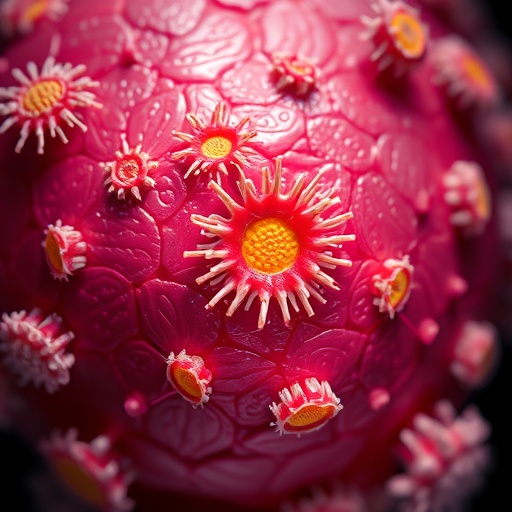Bioabsorbable envelope safe and effective in large global trial
NEW ORLEANS (March 17, 2019) — Encasing cardiac devices such as pacemakers or defibrillators in an “envelope” –a mesh sleeve embedded with antibiotics–reduces the risk of major device-related infection by 40 percent within one year with no increase in complications, according to research presented at the American College of Cardiology’s 68th Annual Scientific Session.
The Worldwide Randomized Antibiotic EnveloPe Infection PrevenTion Trial (WRAP-IT), which involved nearly 7,000 patients in 25 countries, is the first rigorously designed randomized study to demonstrate the safety and effectiveness of this antibiotic-permeated and bioabsorbable envelope, said Khaldoun G. Tarakji, MD, MPH, associate section head of cardiac electrophysiology at the Cleveland Clinic Heart and Vascular Institute and the study’s lead author. It’s also one of the largest global randomized controlled trials of a cardiac implantable electronic device ever conducted, he said.
Roughly 1.5 million patients receive a cardiac implantable electronic device worldwide every year. While these devices have improved and extended the lives of millions of patients, infection remains a major, potentially life-threatening complication.
Most infections occur during the first year following implantation, but the risk is not limited to the initial device implantation, Tarakji said. Patients are exposed to this risk every time they need additional device procedures, such as for generator replacement when the battery is depleted, when they need an upgrade of their device or to revise some leads. Therefore, infection is a risk over a lifetime.
When an infection is confirmed, it usually requires the removal of the device and the leads in addition to an extended course of antibiotic therapy. Complication rates with transvenous lead extraction are low, but when they occur, they can be fatal, especially in leads that have been implanted for many years. In addition to the risk of extraction, patients go through prolonged hospitalizations, leaving them vulnerable to additional complications.
“Studies show that even when the device infection is managed properly with successful extraction procedure and the proper antibiotic therapy, short- and long-term mortality remain high in this group of patients,” Tarakji said. “Prevention is the cornerstone for addressing device infection. Until now, in addition to adhering to strict sterile surgical techniques, preoperative antibiotics have been the only intervention proven in randomized controlled trial to minimize infection risk. Knowing the consequences, minimizing risk isn’t good enough–our goal should be to get the infection rate as close to zero as we can.”
A total of 6,983 patients in 25 countries took part in the WRAP-IT trial, which began in 2015. The patients’ average age was 70 years and 72 percent were men. Most patients (83 percent) were undergoing a revision, replacement or upgrade of an existing implanted cardiac device, while the rest were receiving their first biventricular pacemaker-defibrillator.
Patients were assigned at random to have their device encased in the antibiotic envelope or not. The antibiotic envelope, made of fully bioabsorbable mesh, is embedded with two antibiotics, rifampin and minocycline, that are slowly released into the pocket where the device is placed over seven days. The envelope itself is fully absorbed by the body at eight to nine weeks after implantation. It comes in two sizes, one for use with pacemakers and one for use with defibrillators. All patients were followed up for one year after their procedure and then every six months until the end of the study. The average length of follow-up was 20.7 months.
To minimize infection risk, all patients–both those receiving the antibiotic envelope and those in the control group–were treated with preoperative antibiotics. Additionally, all surgical teams participating in the study were required to use strict, sterile surgical techniques for every procedure.
The study’s primary endpoint was a major device-related infection–defined as an infection resulting in extraction or revision of the device system, long-term antibiotic treatment, or death–within one year of the procedure. Among patients who received the antibiotic envelope, 25 (0.7 percent) developed a major device infection within one year, compared with 42 patients (1.2 percent) in the control group.
“The overall infection rate was lower than expected. This is great news for all electrophysiologists and a testament for the quality of all participating centers in adhering to best practices to minimize infection,” Tarakji said. “Even so, using the antibiotic envelope led to an additional 40 percent reduction in major device-related infection during the first year after implantation. And we saw no increase in complications with the use of the envelope, indicating that it is safe to use.”
Use of the antibiotic envelope should not replace standard protocols for procedure safety, sound patient selection, the use of preoperative antibiotics and proper surgical techniques. However, the envelope is an additional tool to help drive down the risk of infection after the implantation of a cardiac device, Tarakji said.
The researchers plan to conduct a follow-up study of the cost-effectiveness of using the antibiotic envelope. The large, global patient database that was developed for the WRAP-IT trial may also help to answer other important questions related to device infections, Tarakji said. These questions include whether variations in practice such as the management of different blood-thinning medications and the use of different practices and surgical techniques have any effect on rates of infection.
“We now have a wonderful and rich source of information that we can use to educate ourselves about the association of different practices and variables with device infection,” Tarakji said.
###
The antibiotic envelope, manufactured by Medtronic, Inc., has been on the market since its approval by the U.S. Food and Drug Administration in 2013. This study was funded by Medtronic, Inc.
This study was simultaneously published online in the New England Journal of Medicine at the time of presentation.
The ACC’s Annual Scientific Session will take place March 16-18, 2019, in New Orleans, bringing together cardiologists and cardiovascular specialists from around the world to share the newest discoveries in treatment and prevention. Follow @ACCinTouch, @ACCMediaCenter and #ACC19 for the latest news from the meeting.
The American College of Cardiology envisions a world where innovation and knowledge optimize cardiovascular care and outcomes. As the professional home for the entire cardiovascular care team, the mission of the College and its more than 52,000 members is to transform cardiovascular care and to improve heart health. The ACC bestows credentials upon cardiovascular professionals who meet stringent qualifications and leads in the formation of health policy, standards and guidelines. The College also provides professional medical education, disseminates cardiovascular research through its world-renowned JACC Journals, operates national registries to measure and improve care, and offers cardiovascular accreditation to hospitals and institutions. For more, visit acc.org.
Media Contact
Nicole Napoli
[email protected]
http://dx.




